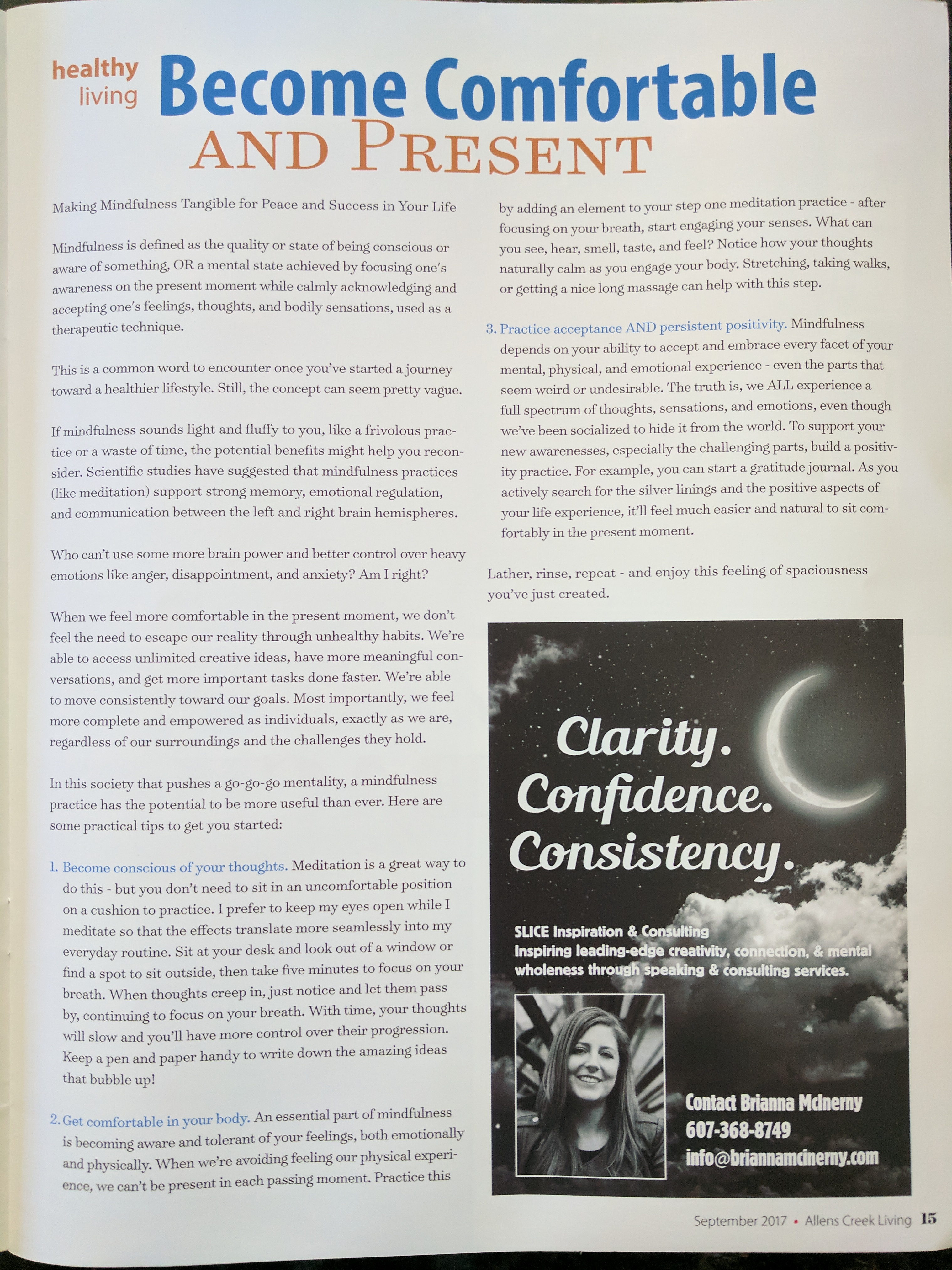Mindfulness is defined as the quality or state of being conscious or aware of something, OR, a mental state achieved by focusing one’s awareness on the present moment, while calmly acknowledging and accepting one’s feelings, thoughts, and bodily sensations, used as a therapeutic technique.
This is a common word to encounter once you’ve started a journey towards a healthier lifestyle. Still, the concept can seem pretty vague.
If mindfulness sounds light & fluffy to you, like a frivolous practice or a waste of time, the potential benefits might help you reconsider. Scientific studies have suggested that mindfulness practices (like meditation) support strong memory, emotional regulation, and communication between the left and right brain hemispheres.
Who can’t use some more brain power & better control over heavy emotions like anger, disappointment, and anxiety? Am I right?
When we feel more comfortable in the present moment, we don’t feel the need to escape our reality through unhealthy habits. We’re able to access unlimited creative ideas, have more meaningful conversations, and get more important tasks done faster. We’re able to move consistently towards our goals. Most importantly, we feel more complete and empowered as individuals, exactly as we are, regardless of our surroundings and the challenges they hold.
In this society that pushes a go-go-go mentality, a mindfulness practice has the potential to be more useful than ever. Here are some practical tips to get you started:
Become conscious of your thoughts. Meditation is a great way to do this – but you don’t need to sit in an uncomfortable position on a cushion to practice. I prefer to keep my eyes open while I meditate so that the effects translate more seamlessly into my everyday routine. Sit at your desk and look out of a window, or find a spot to sit outside, then take five minutes to focus on your breath. When thoughts creep in, just notice and let them pass by, continuing to focus on your breath. With time, your thoughts will slow and you’ll have more control over their progression. Keep a pen & paper handy to write down the amazing ideas that bubble up!
Get comfortable in your body. An essential part of mindfulness is becoming aware and tolerant of your feelings, both emotionally and physically. When we’re avoiding feeling our physical experience, we can’t be present in each passing moment. Practice this by adding an element to your step one meditation practice – after focusing on your breath, start engaging your senses. What can you see, hear, smell, taste, and feel? Notice how your thoughts naturally calm as you engage your body. Stretching, taking walks, or getting a nice long massage can help with this step.
Practice acceptance AND persistent positivity. Mindfulness depends on your ability to accept and embrace every facet of your mental, physical, & emotional experience – even the parts that seem weird or undesirable. The truth is, we ALL experience a full spectrum of thoughts, sensations, and emotions, even though we’ve been socialized to hide it from the world. To support your new awarenesses, especially the challenging parts, build a positivity practice. For example, you can start a gratitude journal. As you actively search for the silver linings & the positive aspects of your life experience, it’ll feel much easier and natural to sit comfortably in the present moment.
Lather, rinse, repeat – and enjoy this feeling of spaciousness you’ve just created.

